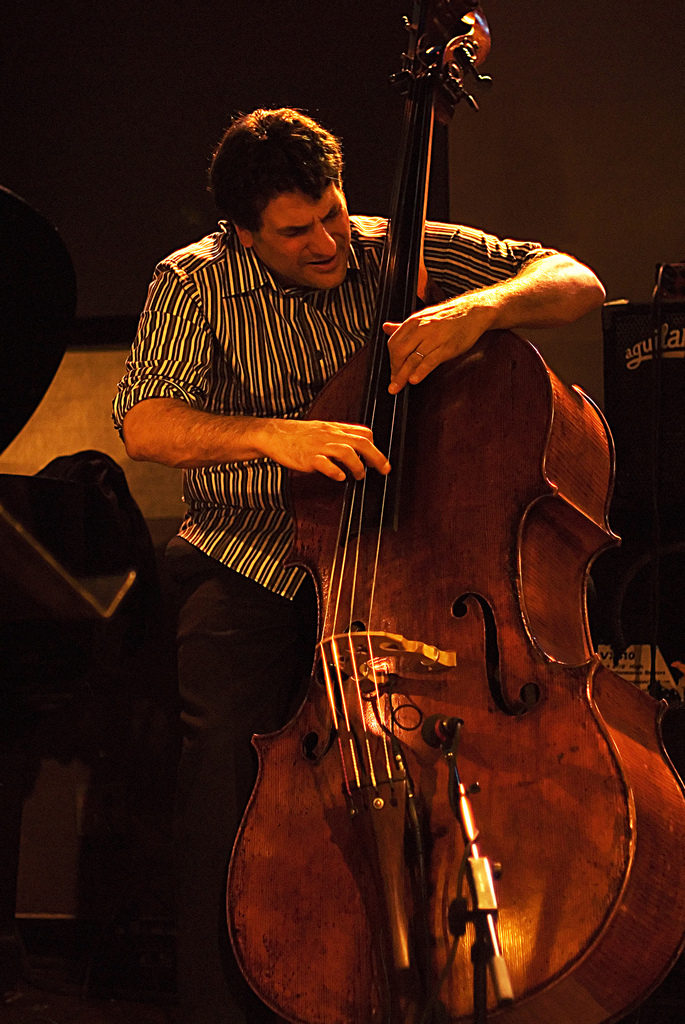March 29, 2008, at Rowan University:
- Shumsky (Vionlinist) - Bach’s violin pieces
I believe that Patitucci had just listened to a student’s performance of a selection from J.S. Bach’s famous cello suites. He shared that lately he had been listening a lot to violinist Oscar Shumsky’s recordings of Bach’s compositions for the violin.
- [Patitucci] used to be really attached to Pablo Casals’s recordings [of the aforementioned cello suites], but not so much now.
- Listening to fiddle players let him realize that you can play these works in time and still give weight to certain moments.
- “Why not have students play great music to solve technical problems?”
- Lowering the action too much to let you play really technically demanding music sacrifices the sound. It’s a bass, not a viola.
I think that Patitucci recommended setting your action comfortably low and then gradually raising it as you become more and more comfortable with the higher string height until you reach a balance between playability and tone. I don’t remember if this was something he said at this master class, or something that he said elsewhere which someone else shared with me.
- If you slow down for every little thing the piece loses its center after a while.
- Once you can play technically and beautifully in time, you can start to add rubato.
- Practice soloing over [the metronome clicking on] two and four, challenge yourself to leave space.
- As an exercise, play a tune (both walking and soloing) in just the lowest couple of positions on the fingerboard.
John proceeded to demonstrate this on “Giant Steps,” if I remember correctly, and he walked a bassline for a chorus or so. He then proceeded to wow the crowd by taking a great solo in the lowest range of the upright bass. It swung hard, it was melodically inventive, and it was technically demanding in addition to the fact that it was in the most sluggish octave and a half of the instrument.
- The rhythm is what gives people the music; otherwise it’s just a collection of notes in a row.
- [On playing the electric bass vs. playing the upright bass] They influence each other, but they aren’t the same.
- Low action on the electric bass isn’t for Patitucci.
- He had long listened to all of the recordings of Herbie with Ron Carter on bass. Ron laid the groove down and also extended the music [beyond its normal bounds].
- Also respected how Carter laid stuff down in such a way that Herbie could roam freely. However, he later realized that a lot of time, Ron was the pushing Herbie and spurring him into different directions; it was truly a dialogue.
- As he began to play with Herbie himself, he was amazed at how sensitive the pianist was to Patitucci’s prompts.
I remember that he was discussing the fact that a lot of young players seem to be very interested in playing things in odd-meters, but that he felt that they weren’t even that fluent in more common meters like 6/8. This is not to say that he was condemnatory of odd-time explorations, just that he stressed the importance of really knowing your place in 4/4, 3/4, and 6/8 and being able to play rhythmically unfettered lines in each.
- Some other people/things he recommended:





No comments:
Post a Comment